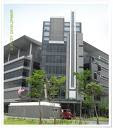
But firms with little debt can buy at fire-sale prices
You know the economic outlook is grim when you can't even buy words of hope.
Literally.
Just up the road from my office in Madison is a strip mall that's been hemorrhaging tenants. "Words of Hope" is among the mall's commercial establishments to have closed its double doors in recent months.
There could be plenty more to come, locally and nationwide.
That a store selling optimism in a nation needing it in abundance should fall victim to hard times seems perversely appropriate. For all the supposed green shoots sprouting in the economy this spring, most concurrent indicators are still dismal and are likely to remain so for at least several more months.
Although residential real estate was at the root of the global financial crisis, the commercial sector is next in line to feel the pain.
Businesses typically operate on one-year leases, and many of those agreements are coming up for renewal for the first time since the U.S. economy fell off the cliff last fall.
Office vacancy rates already have increased by about 20% in major cities.
With consumers worried about their jobs and in survival mode, most commercial establishments are at some risk of failure.
Another headache
All of this has significant implications for the still-ailing banking system.
More than a half-trillion dollars in commercial mortgages will mature in the United States over the next two years. Since some of the commercial operators were as irresponsible with credit as the condo-flippers in Miami and Las Vegas, a good portion of those loans will default, putting more pressure on banks, including many smaller ones.
By one account, bank write-offs of commercial real estate loans jumped 600% last year alone.
The nation's second-largest mall operator, General Growth Properties, filed for bankruptcy in April despite an upscale portfolio of commercial properties that still generates positive cash flow.
Like millions of U.S. households, General Growth took on too much debt when times were good.
At the peak of the real estate bubble, commercial property companies extracted loan-to-value ratios from banks of nearly 100% on the mistaken assumption that prices and rents would appreciate indefinitely. But commercial real estate values have fallen by roughly 33% since early 2007, or significantly more than the median decline in residential real estate prices.
Almost one-quarter of all bank-originated real estate loans fall within the commercial sector and up to three-quarters of those maturing within the next 24 months appear to be at significant risk of default without more capital.
Although investors have been willing to supply additional equity in recent months, there's no guarantee the spigot won't be turned off if economic conditions deteriorate further and the recession lingers into next year.
Shakeout looms
Like the technology group earlier this decade and financials now, commercial real estate suffers from overcapacity and mismanagement, the classic triggers for a painful shakeout.
Companies that took on too much debt will go bust while those that operated prudently seem well-positioned to swoop in and acquire exceptional properties at fire-sale prices.
For astute investors, the bifurcated nature of the commercial real estate market in coming years could be a historic opportunity.
The average real estate investment trust, or REIT, is still down about 70% from its peak despite a powerful rebound since early March. That's about double the decline in the S&P 500.
When the economy finally turns up, the best-run REITs and REIT mutual funds should post sizable nominal and relative returns.
Blessed are the under-leveraged, for they shall inherit the property world.
So there you have a few words of hope - and all for the price of a newspaper.
Source: JS Online 17 May 2009
.jpg)

No comments:
Post a Comment